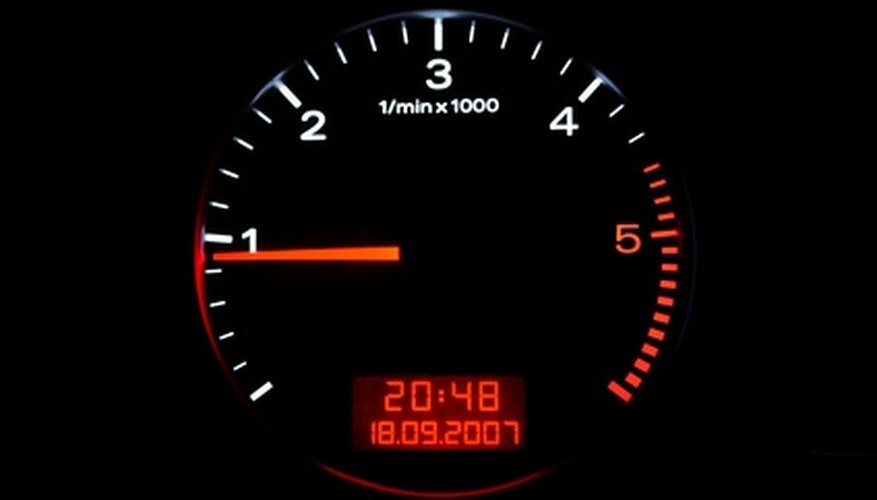Tachometers measure the speed of an engine in revolutions per minute (rpm). These gauges are standard on automobiles, but not featured on all models of motorcycle.You could install an after-market gauge with ordinary automotive tools, thus avoiding a trip to your mechanic.
Examine the "dashboard" area of your bike and decide where you want to mount the gauge. Some tachometers are made to simply clamp onto the handlebars, while others can be housed within the risers.
- Tachometers measure the speed of an engine in revolutions per minute (rpm).
- Some tachometers are made to simply clamp onto the handlebars, while others can be housed within the risers.
Remove the headlight assembly, unplug the bulb, and lay them aside.
Run the tachometer's wiring into the housing. Trim any wire covering until only a few inches remain inside the housing.
Locate the motorcycle's ground wire, which may be colored differently depending on make and model. Measure the the tachometer's ground wire that is needed to reach this wire. If it is longer than needed, trim it to prevent excess wire from tangling or getting snagged in the housing.
Attach the two wires, either by soldering them or clamping them together with an automotive wire connector.
Use a multimeter, or a test light, to find a positive wire inside the housing that is keyed to the ignition. It should only receive power when the ignition is turned to the "on" position. One possibility is looking at the wires that power the front running lights .
- Locate the motorcycle's ground wire, which may be colored differently depending on make and model.
- Use a multimeter, or a test light, to find a positive wire inside the housing that is keyed to the ignition.
Trim the two power wires leading from your tachometer to an appropriate length (as in step 4) and attach them to the positive wire in the headlight bucket.
- Trim the two power wires leading from your tachometer to an appropriate length (as in step 4) and attach them to the positive wire in the headlight bucket.
Verify that the device is receiving power by turning the key to the "on" position. If the light inside the gauge does not turn on, double check the wiring connections you have made thus far.
Remove the instrument cluster and the seat from the motorcycle.
Disconnect the fuel line from the petcock as well as any other hoses or wires. Remove the bolts holding the fuel tank, then carefully lift the tank out to expose the coils. Set it aside. Note: siphoning out the fuel beforehand may help with lifting.
Use a flashlight to look inside the frame. Follow the spark plug wires to the front of the coils.
Search the front of the coils for a black wire with a standard female flat connector. Remove the black wire, place a multi-stack connector in its place, and reconnect the black wire on the other side.
- Use a flashlight to look inside the frame.
- Remove the black wire, place a multi-stack connector in its place, and reconnect the black wire on the other side.
If you are unable to find the wire or no such wire is present, use the multimeter to test both sides of the coil. One side will measure a positive reading of 12 volts, while the other side is the one to which you will connect the tachometer.
Run the relevant tachometer wire backward through the headlight housing along the left side of the bike, alongside preexisting stock wire when possible.
Attach a female, flat, crimp-type connector to the wire, then attach it to the remaining male connection port on the multi-stack connector.
Reinstall the fuel tank and seat, being especially sure to fully insert and re-attach pressurized fuel lines. Turn the key and rev the engine to test the gauge readout, then re-install the instrument cluster and headlights.
